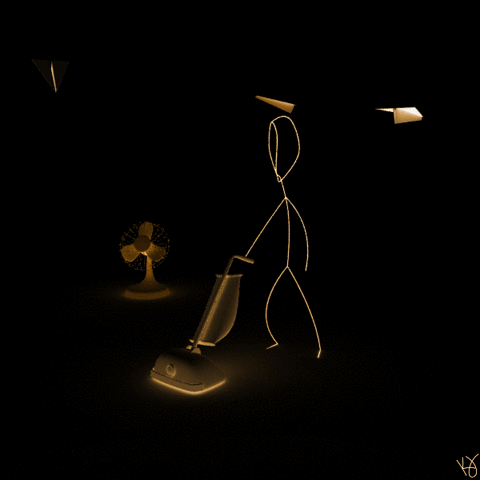
TO TEACH
LEARNING
Emergent Literacy
Clean Your House with V

Rationale:
This lesson is meant to help students in identifying the /v/ sound. This is represented by V. Students will learn the phoneme /v/ by using the sound analogy associated with a vacuum and its symbol. They will also learn how to recognize the letter symbol and phoneme. The students will adapt their phonetic cue reading to incorporate the new sound /v/.
Materials:
Primary paper
Pencil
Eraser
Word cards: van, vat, voice, vein, vase, verb
Vin and Val book (URL below)
Review:
We know that f makes the /f/ sound, so let’s try making the /v/ sound by adding noise.
Procedures:
1. Say: The language we speak every day has many different symbols that all mean something different. With each symbol, our mouths make a different shape. Today, we will be working with the /v/ sound. We are going to spell the /v/ sound using this symbol; V. This symbol is pointy like a chip that we dropped on the ground that needs to be vacuumed up. It makes a sound like a vacuum, too.
2. Say: We are now going to pretend that we are vacuuming up our mess. /v/ /v/ /v/. Do you see how my top teeth rest on my lower lip and I am almost humming? When we say /v/ we hum while our top teeth rest on our lower lip.
3. Say: I am going to show you how to find /v/ in the word live. I am going to say it one letter at a time so that we can try to find where the /v/ sound is. Listen for the vacuum! Lll-i-i-i-vvv-e. Did you hear it? When my teeth touched my lip and I hummed?
4. Victor and his mom, Victoria, loved eating dinner together. Victor hated vegetables. He hid some vegetables in the vase and in the van. This day, though, he decided to throw them on the floor for his vocal coach mom to pick up. This is our tickler: “Victoria used her very vibrant voice while she vacuumed the vegetables.” Let’s say it three times together. Now let’s try it while stretching out the words. Vvvvictoria used her vvvvery vvvibrant vvvvoice while she vvvvacuumed the vvvvegetables. One last time, but let’s break off the /v/ sound from all the words. /v/ ictoria used her /v/ ery /v/ ibrant /v/ oice while she /v/ acuumed the /v/ egetables.
5. Students will take out their paper and pencils. We use V to spell /v/ and capital v looks like a chip that we dropped on the floor. Lower case v looks like a mini chip. Let’s draw it together. For lower case, we start right on the fence and go down to the sidewalk at a slant and back up again like we bounced a ball from one part of the fence to another on the sidewalk. I want you to make nine more like the one I showed you.
6. Call on students to ask which word has /v/ in it. Do you hear /v/ in save or sand? Can or van? Voice or noise?Rave or dance? Love or hate? I want you to tell me which words you hear /v/ in; is, voice, noise, rat, vat, vein, tan, verb, save, make.
7. What other words can we think of that have the letter v in them? Do you think you can spot them in our reading book? I want you to come up with your own funny name using /v/. It could be Vicky-viney-voodoo for example. We want to draw a picture to go along with our new name.
8. I would then show my letter cards and model how the students would pronounce it and decipher whether the words have a /v/ in them or not.
Assessment:
I want the students to pick which word contains the letter v and to circle it.
Have or Has?
Save or Sane?
Van or Can?
vine or Shine?
I would then grade this based on how correct they were.
Vin and Val:
Vin and Val have a cool van that they can carry a lot of stuff in. They do so much with their van, but one day something happens that makes it so that they can’t use their van. You’re going to have to read to see what that is.
References:
Sharon Schellenberg, Robert the Red Horse. URL.
